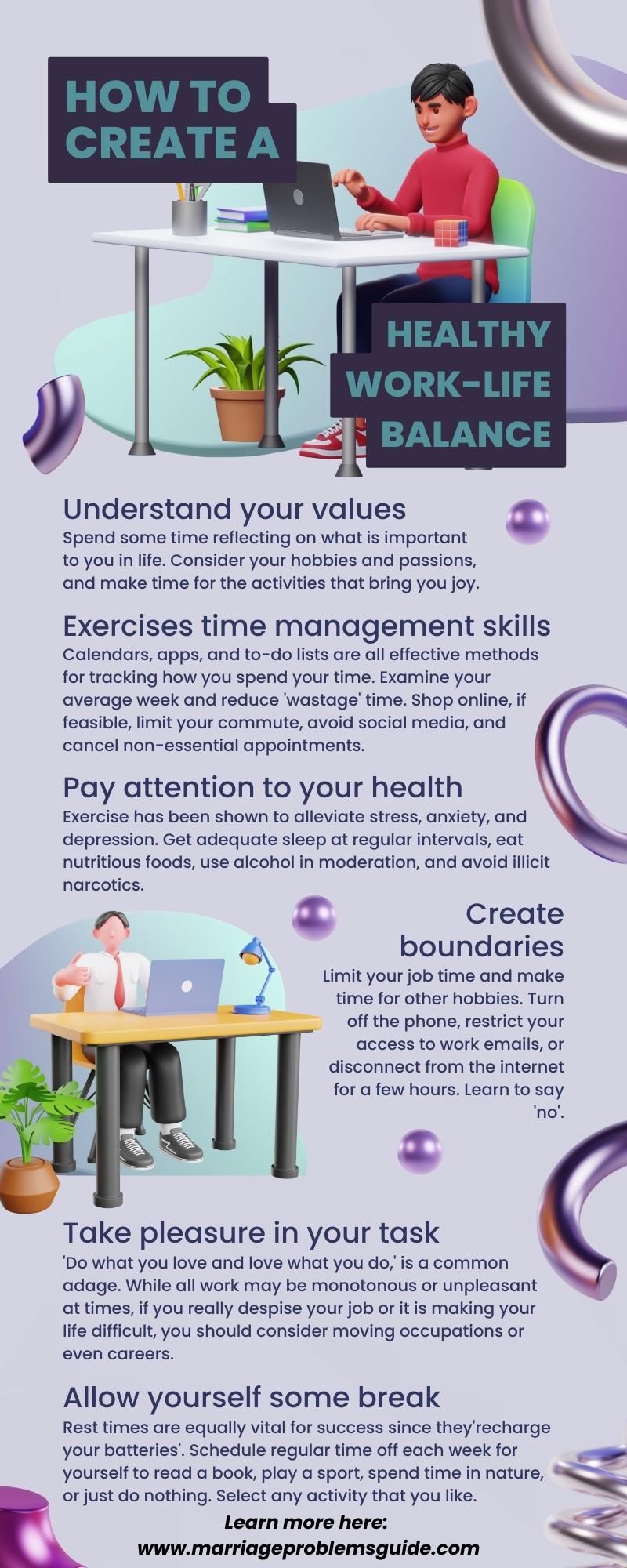Maintaining Work-Life Balance While Working From Home
The COVID-19 pandemic has resulted in a dramatic shift to remote work. With many employees working from home indefinitely, maintaining a healthy work-life balance presents new challenges. Without proper boundaries, work can easily bleed into your personal life.
Fortunately, there are steps you can take to create separation between work and home life, even when your office is just down the hall.
In this blog article, we will share tips and strategies for maintaining work-life balance while working remotely.
What is work-life balance?
Work-life balance refers to effectively dividing your time and energy between work and the other vital areas of your life. Besides your career, key elements of a balanced life include family time, relationships, hobbies, exercise, rest, and relaxation.
Work-life balance does not necessarily mean spending equal time on work and personal activities. Instead, it’s about finding the lifestyle equilibrium that allows you to feel fulfilled, healthy, and satisfied in both realms.
Having a more excellent work-life balance enables you to be more content and productive in your job while also attending to your responsibilities and interests outside of work.
Why is work-life balance important?
Maintaining a work-life solid balance has been shown to provide many benefits:
- Reduces stress and burnout: With adequate work-life balance, you are less likely to experience chronic stress, anxiety, depression, exhaustion, and other symptoms of burnout.
- Improves focus and productivity: Having time for interests and relationships outside work gives you more energy and focus while on the job. You can be more engaged and efficient with work tasks.
- Enhances job satisfaction: Employees with good work-life balance are more likely to feel satisfied and fulfilled by their jobs instead of feeling trapped or overwhelmed.
- Strengthens relationships and health: Work-life balance allows time to cultivate close relationships, pursue hobbies and interests, and maintain healthy habits like exercising and getting enough sleep.
- Improves retention and loyalty: Companies with cultures that promote work-life balance tend to have lower employee turnover rates and higher loyalty.

Challenges of maintaining work-life balance when working from home
Working from home can present unique challenges in maintaining a healthy work-life balance:
- No physical separation between work and life: With no commute to transition between work and home, the boundaries easily blur. Work spills into evenings and weekends.
- Increased isolation: Lack of social interaction with coworkers can lead to longer work hours and less motivation to separate from work.
- Distractions at home: Juggling household duties, children, pets or a partner during work hours can be difficult and reduce productivity and focus.
- Difficulty “unplugging”: The constant accessibility of technology makes it harder to step away from work and resist checking emails and messages after hours.
- No signal for the end of the workday: Without coworkers leaving or commute home, it’s easy just to continue working indefinitely and neglect personal time.
- Less structured time: With remote work, time management is mainly self-directed, making it easy to under or overwork if days aren’t properly scheduled.
- Lack of oversight: Managers may be less able to monitor employee overwork and burnout remotely.

Tips for Maintaining Work-Life Balance
1. Set a Designated Workspace
Having a dedicated home office or workspace is key to compartmentalizing work and personal life. Set up a desk, computer, and other equipment in a specific room or corner of your home for work only.
This creates physical and psychological separation from leisure spaces. Furnish your workspace comfortably but avoid too many homey touches that blur the line.
2. Create a Schedule and Stick to It
Establish set working hours and do your best to stick to them, just as if you were going to an office. Without structure, work tasks can take over your whole day.
A schedule creates necessary boundaries. Set a start and end time and take regular breaks. When the workday ends, shut down and step away. Consider using calendar blocks or time-tracking software to hold yourself accountable.
3. Get Ready Like It’s a Real Work Day
It’s tempting to roll out of bed and start working in pajamas. But having a morning routine like showering, getting dressed, and eating breakfast signals to your brain that it’s time for work mode.
This ritual also helps you get into the right headspace to be productive. You can always change into loungewear on breaks.
4. Take Advantage of Flexibility
While structure is essential, remote work does allow more flexibility. Have a cut-off time for when you stop checking emails each day.
But if you need to take a long lunch break to exercise or run errands, the remote workday allows for that. Take advantage of small pockets of time that would usually be lost commuting. Just be sure to communicate availability to colleagues.
5. Establish Household Guidelines
Discuss work-from-home expectations with family members or roommates. Let others know when you are “in the office” and unavailable. Ask that they avoid interrupting unless urgent. Ensure kids and pets have care and activities arranged during working hours.
Noise-cancelling headphones can also help minimize distractions. Consider having a “do not disturb” sign for your workspace.

6. Prioritize and Batch Similar Tasks
Without coworkers, it’s easy to become distracted by household demands. Review your to-do list each morning and tackle essential or complex projects when you’re most focused.
Save lower-priority tasks like returning emails for later. Batch similar tasks together to stay efficient. Protect productive hours for high-impact work.
7. Take Regular Breaks and Lunch
Don’t minimize the importance of taking real breaks when working from home. Step away from your desk at least briefly every 60-90 minutes. Take time for lunch.
Eat away from your workspace if possible. Use breaks to stretch, move around, get outside, or do an enjoyable activity. This boosts energy and focus when you return to work.
8. Set Tech Boundaries
Just because you can check email on your phone at 10 p.m. doesn’t mean you should. Establish device-free blocks in the evening and at bedtime so you’re not getting work notifications outside of work hours.
Silence and put away work devices when you’re with family. Limit checking messages to specific times to avoid constant disruption.
9. Have a Designated Stopping Point
Without a commute home, it’s easy for the workday to drag on indefinitely. Decide on a set stopping point each day and stick to it. Wrap up outstanding tasks and prepare to-do lists for the next day during the last 30 minutes of work time. Establish an end-of-day ritual like shutting down equipment to signal closure.
10. Reflect on Balance Weekly
Check-in with yourself regularly about how well your boundaries are working. Look at how you’re spending time each week and if you feel your work and personal lives are balanced.
Make any necessary adjustments. Are you taking vacation and sick days? Discuss any concerns with managers. Frequent assessment ensures remote work setups continue meeting your needs.
Conclusion:
Working from home allows incredible flexibility. But without deliberate effort to set boundaries, work can encroach too far into your personal life. Implementing these tips can help maintain a healthy work-life balance and avoid burnout when your office is always just a few steps away. Learn here more about work-life balance from home.



